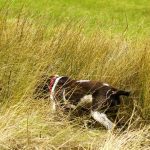Managing Your Dog’s Bed Rest.
It can be a little unnerving if your vet prescribes cage, or bed rest, for your dog! How?! – you cry – are you going to keep a young whirling dervish of a hound still for more than ten minutes, let alone a week, or even more!? For many dog owners in this predicament, Holidays4Dogs offers some advice and reassurance on managing your dog’s bed rest.
If your dog has had major surgery, cage rest is important to help your dog’s recovery. The problem is, this can amount to a period of up to six weeks in some cases. Many dog owners, understandably, find this a daunting prospect.
If your dog can be encouraged to rest without being in a crate, this should be fine, (but check with your vet first). If your dog is used to resting on the sofa, however, beware that he shouldn’t be jumping on, or off it.
(but check with your vet first). If your dog is used to resting on the sofa, however, beware that he shouldn’t be jumping on, or off it.
Following an operation, a dog will naturally want to rest for the first few hours. However, once anaesthetic has worn off and the dog is feeling better, he will want to be back on his feet.
In can be very difficult indeed to enforce bed rest on young, and energetic dogs in particular. However, the more you can encourage your dog to rest, the quicker he will make a full recovery.
Your vet will advise you on when to begin gentle exercise with your dog. This will depend on the type of operation your dog has undergone. As an example, spayed females should have complete cage rest for 48 hours. After a day, or two, they can have short walks, but must not run, jump, or twist. This should continue for two weeks.
Brain games for managing your dog’s cage rest.
One of the main things to do when your dog cannot exercise is to help him to keep his brain active. To a certain extent this will wear him out and will at least keep him occupied without the need to be constantly on his feet, or moving around too much.
Look at cage rest as an opportunity to teach your dog something new. You can practice stays, paw touching, hold and drop items, or nose touches using a ball on the end of a stick. Other low impact activities, — for later on in your dog’s recovery, perhaps – could involve training to slowly walk on the lead, – indoors, or in the garden during toilet times, for example.
There are also lots of puzzle toys on the market, such as Kongs. These toys dispense treats that will help to keep your dog engaged and occupied. Particularly useful if you need to pop out for a short while.
Teaching your dog relaxation through massage is also a good tip and will be useful once your dog is back on his feet. There are many good books and websites that explain basic canine massage techniques.
Your dog may seem depressed, or bored, so use this opportunity to provide him with lots of reassuring cuddles and attention.
 Alternative calming remedies for dogs that need to rest.
Alternative calming remedies for dogs that need to rest.
Some particularly anxious dogs may benefit from pheromone sprays, or plug-ins. These devices emit odours that mimic pheromones emitted by a mother dog when nursing her puppies.
Calming herbs such as chamomile tea may also help to relieve stress and help your dog feel more relaxed. Other herbal remedies such as valerian or St. John’s wort may also be useful.
If your dog is extremely anxious and agitated in the first few days, your vet may prescribe mild sedatives.
Conclusion.
Having a dog on restricted activity for a period of weeks can be worrying for dog owners. However, you and your dog should quickly get into a new routine. The benefit of more one to one attention may mean that, once your dog has recovered, he may well be better behaved than he was before!
He may even have learned some new tricks. While 2 to 6 weeks, – or even longer in some cases – may seem like an age, it will pass quickly. The time spent will provide you with an opportunity to bond closely with your dog. This will almost certainly have a positive effect, once your dog is raring to go again.



